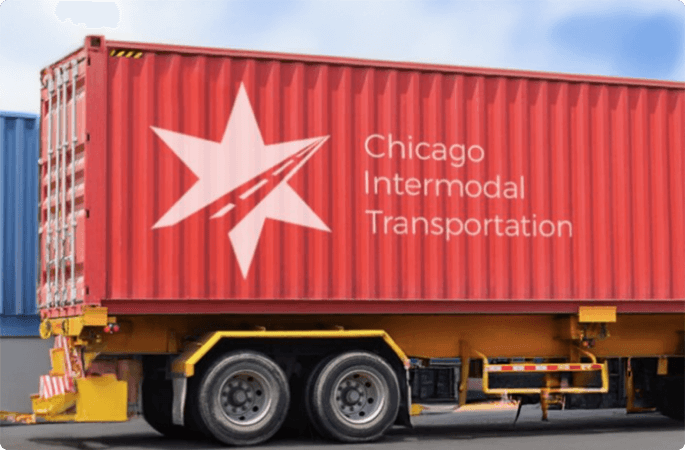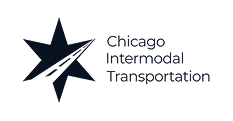When Antoine, Director of Operations at Chicago Intermodal, thinks back to the early days of his role, he doesn’t sugarcoat it:
“If something broke at 2 a.m., my phone rang. Our team had to scramble to find help. We were completely reactive.”
Chicago Intermodal is no small player. Established in 1989 and rooted in Chicago’s vast rail infrastructure, the company moves freight for major railroads and warehouse clients throughout the Midwest and Southeast.
The company serves a complex logistics network with around 130 owner-operators and terminals in cities like Indianapolis, Minneapolis, Kansas City, St. Louis, and Florida. But with complexity came chaos — especially when equipment broke down.
Back then, every equipment issue triggered a chain of uncertainty. There was no clear system for tracking service requests. Everything ran through email threads, phone calls, and gut instinct. Drivers sat idle. Dispatchers got overwhelmed. And the company often footed the bill for delays and damages they couldn’t prove.
“We had no visibility. No reports. We couldn’t say how long something took to fix or even when it started. That made us vulnerable.”
Discovering REACH: A Game-Changer
During a site visit with DCLI, a key partner, Antoine, first encountered REACH. What began as a curiosity quickly evolved into a full onboarding. The team at REACH walked Chicago Intermodal through the platform, guided them through setup, and provided hands-on training. Antoine and his safety manager quickly realized they were working with something different.
“At first, it felt complex. But once we understood how proprietary and powerful it was, it just made sense. Now, it’s second nature.”
The Turning Point: From Manual Mayhem to Central Command
One of the first major improvements was organization. For the first time, Antoine could see every service request tied to specific data points: the terminal, the railroad, the vendor, the part, and the timeline.
Want to know how long it takes to replace brakes in Florida? The average is 4.5 hours from request to completion. That’s not a guess — it’s REACH data.
Need to know which vendor gets the most requests? It’s DCLI. Which railroad terminal causes the most issues? BNSF Chicago.
Before REACH, none of this was possible.
“We were drowning in manual work. Now, I can filter and find what I need in seconds. It’s a different world.”
Reducing Costs and Preventing Repeat Problems
The platform created visibility and accountability. Drivers are now held to process standards. If someone gates in a container with visible damage, Antoine can pull a timestamped log and show exactly when a repair should have happened and who failed to report it.
“That means fewer fines, fewer disputes, and a clearer line of responsibility.”
It also reduced duplicate tickets and dry runs. One infamous example is a container that once had 13 different service requests in a single month. That’s now a thing of the past. With REACH, teams can see open tickets in real-time and avoid creating duplicate ones.
Communication with vendors has improved, too. A vendor can now update a request directly in the system, flag additional issues, or clarify parts availability — all without back-and-forth emails.
“It’s clean. It’s fast. It’s documented.”
Night Shift, Transformed
Before REACH, night shifts were nightmares. Drivers stranded on the road would call Antoine directly at all hours. The team would scramble to find vendors and update dispatch manually.
Now, those 2 a.m. calls are history.
Drivers use the REACH app to request help; night crews can assign vendors without needing to wake up leadership. Even if a driver doesn’t have the app, the night team can handle it for them.
“From the moment a request comes in, a vendor is usually assigned within 30 to 60 minutes. That means less waiting and more driving — and our drivers get home.”
DOT regulations allow drivers to pause their time if they’re in sleep or berth mode. So while the repair happens, they’re not losing hours — they’re resting. Once the fix is done, they’re back on the road, legally and safely.
“That alone is a game-changer. It keeps our guys legal and off hotel costs.”
Learning by Doing: Teaching the Team Through REACH
REACH has become more than a logistics tool — it’s become a training platform. Every request forces drivers and dispatchers to learn the equipment better. What’s a glad hand? What’s a twist lock? What does a faulty mudflap look like?
“Now, when we talk about components, people visualize them. They understand what they’re requesting. That’s made us smarter across the board.”
Antoine even works with drivers who used to train for CSX, pulling in expertise to upskill the entire team.
Reports That Mean Something
Perhaps the most impactful tool has been REACH’s reporting system. In May, Antoine began pulling reports across all markets, and the insights shocked him.
Tires were the top issue, followed by brakes and landing gear. Before REACH, it would have been an educated guess at best.
Now he can see everything — broken down by vendor, terminal, container type, and component. He uses this data in industry committees and customer conversations to drive better accountability.
“We’re not making assumptions anymore. We’re using facts to push for better maintenance standards across the board.”
He even stopped a customer from charging a per diem by pulling service timestamps, which proved the delay was due to a repair, not a driver error.
Final Word: What Success Looks Like
Today, Chicago Intermodal is operating with more clarity, control, and confidence than ever before. Drivers are safer, the team is better trained, and costs are down. And Antoine? He gets to sleep through the night.
“We used to operate on hope and hustle. Now, we operate on visibility, data, and process. REACH gave us that. It’s the best decision we’ve made.”

